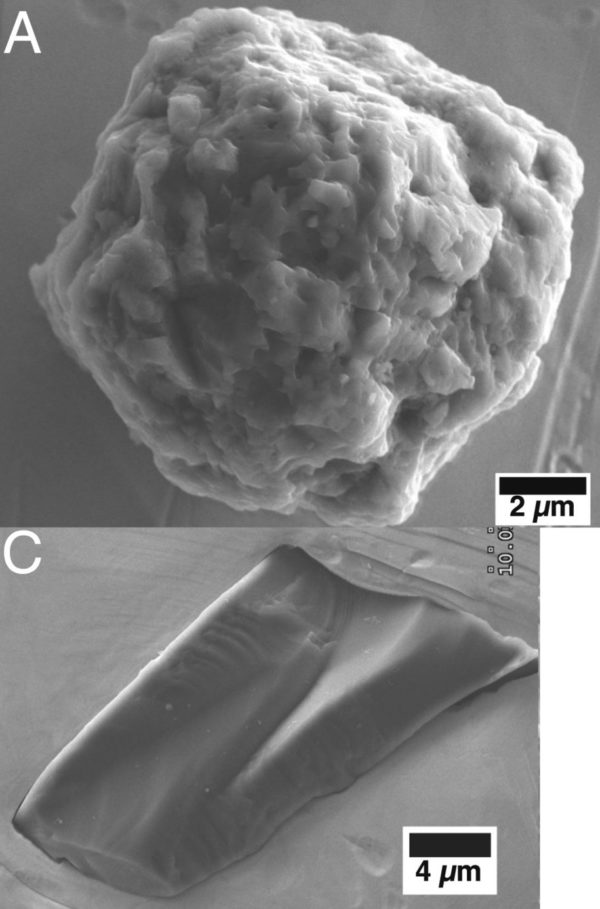As Carl Sagan once said, “we are made of star stuff“: and here some of it is; mineral grains formed around distant suns, hundreds of millions of years before our solar system was born.

These grains of silicon carbide were hiding inside a meteorite which, before it fell to Earth, had basically hung around in the solar system for 4.5 billion years with absolutely nothing happening to it. Most of the material incorporated into the planetary nebula that formed the solar system got reformed and recycled into new compounds or minerals. But where the earliest building blocks of the solar system have been preserved intact, you can find a few surviving ‘pre-solar’ grains that did not get reprocessed into new minerals, new planets, and eventually – us.
The study in which these pre-solar grains are described also attempts to get an idea of their pre-solar history. As they drifted through interstellar space, high energy cosmic rays whacking into them generated exotic isotopes within their mineral lattices. The longer they drifted, the more of these isotopes built up inside them, so we can use their concentration to estimate how long it was between being ejected from their original solar system and getting caught up in the formation of our own.
The answer? Most grains spent 100-300 million years adrift in interstellar space, but the oldest grain might have been drifting for more than 3 billion years – making it more than 7 1/2 billion years old.
So finally, the Jack Hills zircons can be introduced to some minerals who would regard them as young whipper-snappers.



Nice plan for content warnings on Mastodon and the Fediverse. Now you need a Mastodon/Fediverse button on this blog.